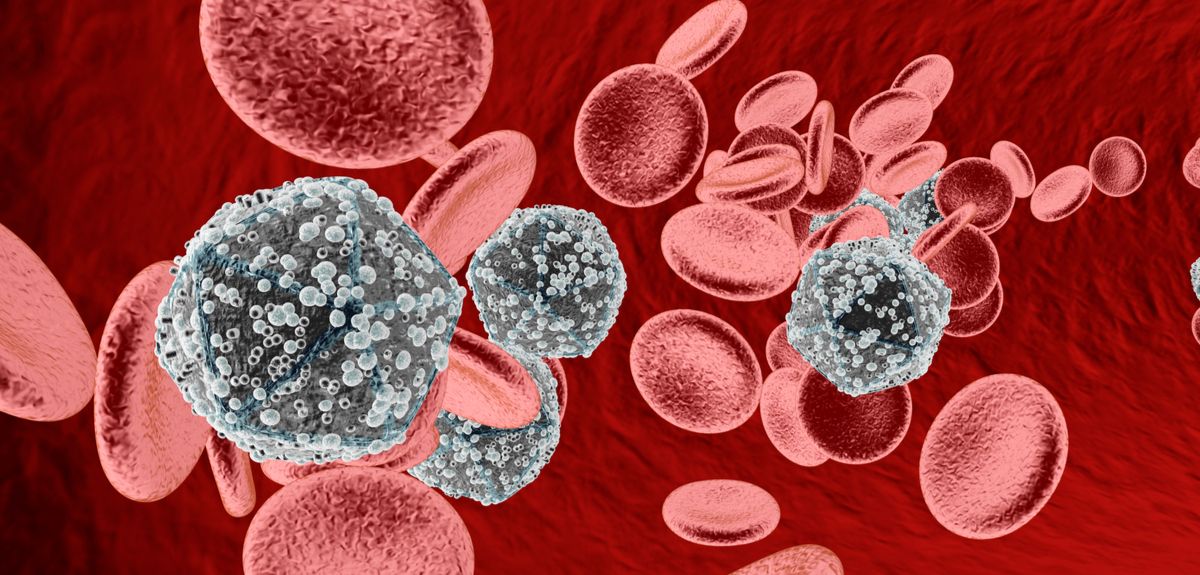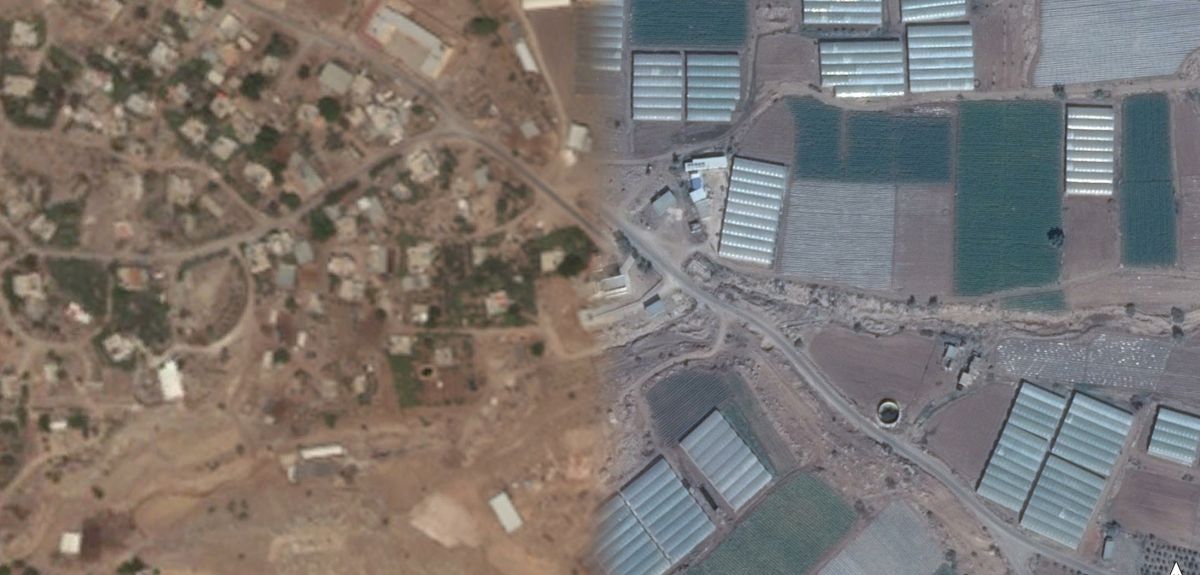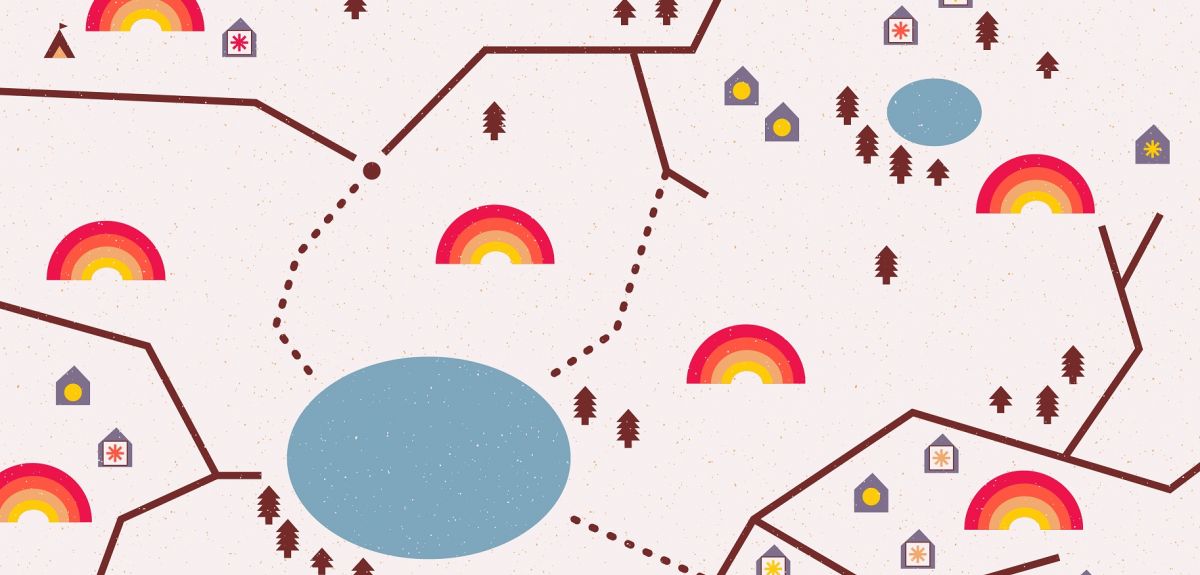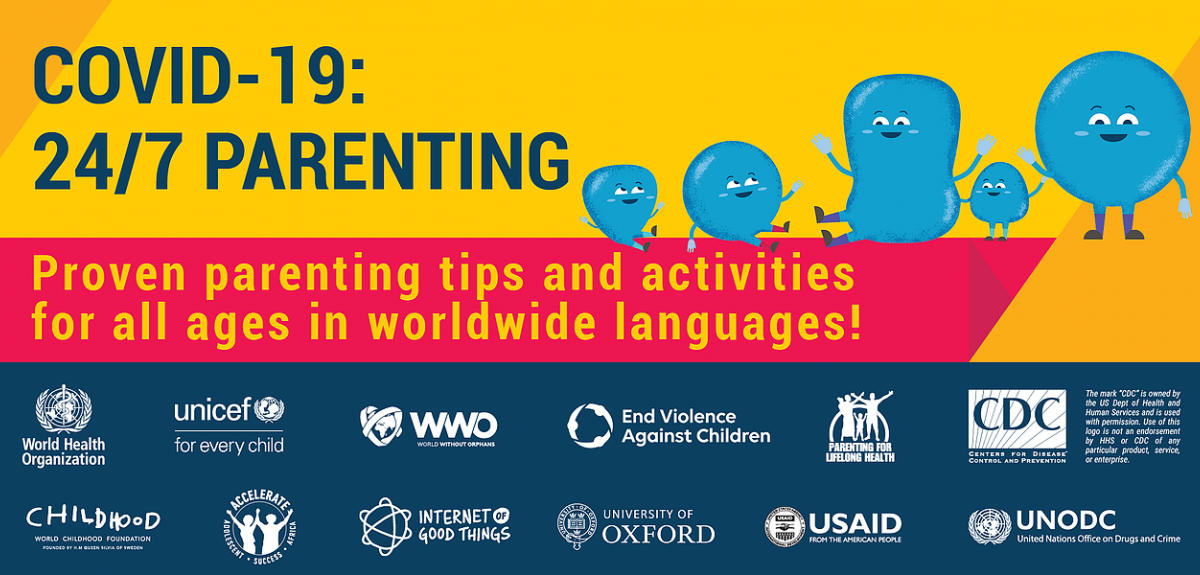Features
The UNAIDS estimates that 38 million people currently live with human immunodeficiency virus (HIV) infection. Combination antiretroviral treatment has had great success in saving lives but is also associated with numerous medical and public health challenges. Vaccination remains the best and most cost-effective option for controlling HIV infection across the world. Professor Tomáš Hanke jointly from the University of Oxford, UK, and Kumamoto University, Japan, designs vaccines and coordinates clinical programmes testing the most advanced vaccine candidates developed by his team in the UK, Europe, USA and Africa.
Ending AIDS with vaccination
Human immunodeficiency virus (HIV) type 1 represents 95% of all HIV infections worldwide and is responsible for the global HIV pandemic. If untreated, HIV-infected patients develop acquired immunodeficiency syndrome – better known as AIDS – that manifests as a progressive failure of their immune system. As a result, patients eventually succumb to opportunistic infections. Combination antiretroviral treatment (cART) has transformed the lives of people living with HIV, and dramatically decreased AIDS-related mortality and onward transmission of HIV.
Unfortunately, the provision of cART to everybody who needs it faces many obstacles particularly in low- and middle-income countries. The cost, complexity of the treatment, necessity of regular monitoring of patients, threat of drug resistance, side effects, social stigma and the use of cART to prevent HIV infections (or pre-exposure prophylaxis), which further stretches the cART supply, make cART a suboptimal therapeutic and an unlikely stand-alone tool to end the HIV epidemic. Therefore, an effective vaccine for both prevention and cure of HIV is urgently needed.
Professor Tomáš Hanke and his team at the Jenner Institute at the University of Oxford, UK, together with their collaborators at the Joint Research Center for Human Retrovirus Infection, Kumamoto University, Japan, are studying T cell responses to HIV to inform vaccine development. In addition, Professor Hanke oversees Experimental Medicine trials of his leading T-cell vaccine candidates in healthy and HIV-positive people at several global sites and collaborates with prestigious universities and organisations such as the International AIDS Vaccine Initiative, IrsiCaixa AIDS Research Institute-HIVACAT in Spain, Imperial College London, the Kenya AIDS Vaccine Initiative-Institute for Clinical Research and National Institute of Allergy and Infectious Diseases. He also co-ordinates the ‘Globally Relevant AIDS Vaccine Europe-Africa Trials Partnership’ consortium, acronymed GREAT, which builds research capacity and tests vaccine candidates in Eastern and Southern Africa, and is one of the principal investigators of the European AIDS Vaccine Initiative 2020.
Rational iterative development
Most of today’s HIV vaccine research focuses on antibody-mediated immunity, which neutralises cell-free viruses and typically involves exposing people to the outer HIV spike. However, to achieve HIV control, antibodies may need to be complemented by T-cell responses, the focus of Professor Hanke’s research. There is no doubt that T cells contribute in an important way to anti-HIV immunity, whereby CD8 T cells known as ‘killer cells’ directly kill virus-infected cells, the virus factories, and CD4 T cells or ‘helper cells’ assist and co-ordinate antibody and T-cell induction. ‘The trick is to induce not just any, but protective killer T cells that can slow or stop HIV,’ explains Professor Hanke.
The first clinically tested vaccine that Professor Hanke and his colleagues developed was called HIVA. It was derived from an African clade A strain of HIV and was tested in over a dozen clinical trials. Following the field’s full appreciation of the HIV’s enormous ability to change, Professor Hanke improved his approach by focusing vaccine-elicited T cells on the functionally conserved regions of HIV, which are common to most HIV strains and essential for virus survival. If successful, such a vaccine could be deployed universally in all global regions.
The prototype conserved immunogen was called HIVconsv (to emphasise conserved in addition to consensus sequences) and assembled highly conserved HIV regions into a chimeric protein alternating the global major HIV strains. This vaccine showed encouraging results in initial small clinical trials and informed the design of the second-generation conserved vaccines called HIVconsvX. Notable HIVconsvX improvements include the use of bioinformatics to redefine conserved regions and increase the vaccine match to the global HIV variants by using a so-called ‘mosaic’ design. The HIVconsvX vaccines entered clinical evaluation in 2019 with further trials in the pipeline.
The importance of vaccine vectors
The quality of vaccine-elicited T-cell responses is strongly influenced by the way HIV immunogens are introduced into the body. The utmost priority is safety and Professor Hanke and his colleagues test all potential vaccine vectors intended for human use in mice and macaques first. The three most promising modalities that progressed in combination to human studies were 1) plasmid DNA, 2) engineered adenovirus of chimpanzee origin, the parent of which causes a common cold-like disease in monkeys, and 3) a poxvirus modified vaccinia virus Ankara (MVA), an attenuated smallpox vaccine used safely in many people during the smallpox eradication campaign. None of these three vaccines is replication-competent and can grow in the vaccinees’ body or spread to the environment; they are safe.
The HIVA vaccine was delivered by a combination of DNA and MVA and induced only weak T-cell responses mainly because of the inefficient DNA prime. Induction of T cells by the HIVconsv vaccines was greatly improved by the addition of the chimpanzee adenovirus. However, the adenovirus-MVA combination without DNA was as good as all the three vectors together and was therefore chosen for further studies.
HIVconsv vaccination-induced strong T cells that recognised multiple sites on the HIV. Vaccine-elicited T cells in HIV-negative volunteers in Nairobi, Kenya, were capable of a broad cross-clade inhibition of HIV under laboratory conditions. The HIVconsv vaccines were also tested in ‘kick-and-kill’ studies in early treated HIV-positive individuals. During infection, HIV integrates into the host chromosome, stops expressing its proteins (‘falls asleep’) and becomes invisible to the immune system, but regularly reactivates. This means that to eliminate HIV from the body, all sleeping HIV first needs to be awakened, or ‘kicked’ before it can be killed by the vaccine-induced killer T cells.
In a small pilot ‘kick-and-kick’ study in Barcelona, Spain, the HIVconsv vaccines together with an HIV-reactivating drug provided a signal of sustained suppression of HIV replication after stopping cART. Although a marginal result, it was very encouraging and warranted further testing of the ‘kick-and-kill’ strategy with these vaccines as an HIV cure.
Understanding the consequences of HIV variability
A successful vaccine needs to elicit killer T cells capable of reaching HIV-infected cells and killing them to stop virus growth. To be safe and effective, the killer T-cell assault must be sufficiently specific and efficiently target vulnerable parts of the HIV from the very first exposure to the virus. However, HIV is extremely variable and this makes it very good at avoiding the T-cell attack and escaping. There is lots of supporting evidence that people’s genetic makeup, the sites on HIV that killer T cells target and HIV escape are the major determinants of how well individuals fight HIV and scientists need to understand these processes in great detail.
Some T-cell responses are better at protecting than others. In the past, attempts to understand which parts of HIV should be targeted for protection often looked at responses to the whole virus and/or full-length virus proteins as units. This blurred the analysis because within each protein there are both stable and variable regions and these are not equally protective. Professor Hanke’s strategy exploits the stable and therefore vulnerable parts on HIV proteins.
This idea was supported by studies of Professor Hanke’s colleagues at Kumamoto and Tokyo Universities. HIV-infected patients, who never received any cART, controlled HIV better and were healthier (had more CD4 cells in the blood) if they targeted the same regions as used in the vaccine. This is an important observation endorsing this vaccine approach.
The quest for improvement
Although Professor Hanke’s strategy is rational and, so far, supported by good experimental results, many challenges remain on the road to an effective T-cell vaccine.
To be efficient, T-cell responses must, upon HIV exposure/reactivation, rapidly reach the sites of HIV growth within the patient’s body, kill infected cells and produce anti-HIV chemicals, be in sufficient numbers, and recognise multiple vulnerable regions at the same time to make escape difficult. It is plausible that if any one aspect of these T-cell properties is suboptimal, the vaccine may fail.
Professor Hanke and his colleagues study T-cell responses induced by HIV infection and vaccination in order to further refine the vaccine immunogens and their vector delivery. Novel and sometimes small but significant step-by-step improvements are tested in pre-clinical investigations and human trials. ‘Iterative improvements are best informed by human data, the only species that ultimately matters,’ says Professor Hanke.
Finally, new-born babies, children and adolescents, some of whom have acquired HIV perinatally, that is, via mother-to-child transmission, or babies who are exposed to HIV through mother’s milk, remain somewhat unique populations because of their young and, if treated soon after birth, relatively preserved immune system. To date, there have been several hundred HIV vaccine trials in humans, but only a very few tested candidate HIV vaccines in these age groups. Yet, childhood vaccines are the biggest success of vaccinology. Professor Hanke and his colleagues tested the HIVA vaccine in African neonates as the first step towards preventing mother-to-child transmission through breastfeeding and are planning to revisit these age groups using the conserved mosaic vaccines.
Satellite images of the earth’s surface are familiar. From Google Earth to estate agents’ websites, space age technology is used to bring us images of the world in which we live. And there has been regular exciting news from archaeologists about an entire new city or settlement discovered in the desert or on a remote hilltop, lost to generations, found thanks to satellite imaging.
There are pictures of almost every country on Earth, from space. But there has been one key area which it has not been possible accurately to view with satellites, frustrating archaeologists keen to study the region. That area is Israel and the Occupied Palestinian Territories (OPT) - a region packed with the history of ages and civilisation, where feet really did walk in ancient times.
There has been one key area which it has not been possible accurately to view with satellites, frustrating archaeologists keen to study the region. That area is Israel and the Occupied Palestinian Territories (OPT) - a region packed with the history of ages and civilisation, where feet really did walk in ancient times
A long-standing prohibition in the United States, known as the Kyl-Bingaman Amendment, meant that archaeologists studying the region could not use US satellite technology – which was the main source for many years, although Israel itself put good quality images of its territory on its own mapping agency website.
Two Oxford archaeologists, Dr Michael Fradley and Dr Andrea Zerbini, decided to do something about it. And recently, following concerted effort over several years, reform of the prohibition was allowed. Restrictions over the sale of US high-resolution satellite imagery over the region was reduced on the Federal Register on 21 July. It was a significant victory.
Dr Fradley maintains, ‘This ruling opens up many opportunities for research for archaeologists and many other disciplines which use Earth observation, such as for monitoring evidence of climate change and water exploitation. And it is a big win for science...
‘A century ago, the Cambridge botanist Hugh Hamshaw Thomas, who served as an RFC/RAF intelligence officer on the Palestine front during the First World War, highlighted the value of aerial photography for scientific study in the Levant in a paper in the journal Nature. But this potential has rarely been achieved. Hopefully, this long-overdue reform will help reverse that trend with regards to more recent satellite imagery’.
This ruling opens up many opportunities for research for archaeologists and many other disciplines which use Earth observation, such as for monitoring evidence of climate change and water exploitation. And it is a big win for science
This reform success has been hard-fought. It all started because the Oxford pair came up against the barrier. Their work was part of the Arcadia-funded, Endangered Archaeology of the Middle East and North Africa (EAMENA) project. It uses satellite imagery to identify and monitor archaeological sites across the MENA region.
Three years ago, they found most archaeological sites in the OPT were not visible on the available low-resolution imagery. According to Dr Fradley, ‘It was a major barrier to our work. The imagery available was very low resolution – because of the US restrictions. We decided to find a way around it.’
They did find a way. The Kyl-Bingaman Amendment contained a reform mechanism that meant restrictions would be lowered, if companies outside the US were selling their own satellite imagery at a higher resolution than the level set by the US restrictions. And things had changed.The US was no longer the only supplier; Airbus provided imagery. The archaeologists found the French company had been producing sub-2m resolution of Israel from at least 2012. But nobody in the US had been effectively monitoring the situation. Since that time, several other companies outside the US had also surpassed the 2m level, including the South Korean company Kompsat. But, from an academic perspective, US satellite imagery offered the potential for open-source free access – essential for academic uses.
The Oxford pair tried to argue their case, with little response – although no one in the scientific community argued that the restriction should be retained. But they persevered, publishing an agenda-setting paper on the restrictions in the journal Space Policy and working with the Washington-based policy group al-Shabaka. Finally, the US regulator relented, lowering to the restricted level to 0.4m as the archaeologists had argued, a level achieved by the Kompsat K3A satellite.
The decision to lift the prohibition has ‘huge implications', according to Dr Fradley. ‘We haven’t been able to access some areas in occupied territories and this will make an enormous difference.
‘We will be able to record archaeology of the region on a granular level and have a much more objective view. We will be able to see if there has been damage to sites and, potentially, [if they secure access to retrospective imagery] identify where sites have been lost.’
The decision to lift the prohibition has ‘huge implications’, according to Dr Fradley. ‘We haven’t been able to access some areas in occupied territories and this will make an enormous difference.
Dr Fradley explains, ‘Israel has its own mapping of the entire country and a well-developed and well financed antiquities authority...but we haven’t had accurate imagery for the OPT. More data is of more benefit.’
Commenting on the news, Dr Jack Green, Associate Director of the American Centre for Oriental Research, based in Amman, Jordan, says, ‘The release of this more detailed satellite imagery will help provide many archaeologists and cultural heritage professionals with the vital additional tools needed to document and monitor sites and landscapes under their care from continual threats of urban encroachment, agricultural development, looting, vandalism, and other unauthorized activities. This is especially important for monitoring areas which are difficult or impossible to gain access to for security reasons.’
Dr Carol Palmor, Director of the Council for British Research in the Levant, also based in Amman says, ‘This represents an essential step for the protection of heritage in Israel and Palestine, with profound implications for many years to come. Furthermore, it is a brilliant example of the impact of research on policy and international legislation.’
This represents an essential step for the protection of heritage in Israel and Palestine, with profound implications for many years to come. Furthermore, it is a brilliant example of the impact of research on policy and international legislation
This successful reform has been bittersweet. In July last year, Dr Andrea Zerbini passed away of a rare cancer at the age of 34, when it still appeared that the restrictions would not be lifted. The present reform would have delighted him, and the decision is a lasting tribute to the research in Space Policy, in which he was a prime mover.
By Dr Fiona Jones, Digital Editor Oxford Sparks
We’ve all heard of – and indeed been affected by – COVID-19, the disease caused by infection with the novel SARS-CoV-2 virus. We’ve also become familiar with a plethora of new terminology, with “social distancing”, “lockdown”, “flattening the curve” and “R number” regularly and effortlessly winding their way into our conversations. Something we might not be so familiar with, however, is the scientific process undertaken when we find ourselves faced with a new and unknown pathogen (whether that be a virus, bacterium or prion).
The latest Oxford Sparks animation, created with Professor of Applied Statistics Christl Donnelly, “Understanding COVID-19 transmission, informing control”, sheds some light on this process, likening the challenge to “piecing together a puzzle”.
Using knowledge acquired from previous outbreaks, statistical modellers combine data and equations to estimate the growth of the epidemic, in addition to other parameters, such as the ‘case fatality ratio’ – or proportion of cases who die of the disease. Such estimations are not straightforward, not least because of the huge diversity in pathogen characteristics – even amongst a single group, such as the coronaviruses.
For instance, the virus that caused Sudden Acute Respiratory Syndrome (SARS-CoV, identified in 2003) led to serious clinical disease in all cases of infection. In contrast, many infections with SARS-CoV-2 (the virus responsible for the current pandemic) are asymptomatic. Importantly, it appears that individuals can transmit the virus to others whilst asymptomatic (or in a pre-symptomatic stage), making it much harder to control. Furthermore, this makes it more challenging to estimate parameters such as the infection fatality ratio, as the number of asymptomatic cases – a tricky statistic to discern – must also be taken into account during analyses.
As shown in the animation, there are many important parameters that describe how infections progress within individuals and spread through a population; knowledge of each can help to inform policymakers’ decisions. Examples include the incubation period – used to determine how long periods of isolation should last – and R0, the basic reproduction number. This metric, which represents the average number of infections likely to arise owing to transmission from a single infected individual in a fully susceptible population, has been used to assess infection risk and inform policy throughout the current pandemic – as anyone who’s tuned into one of the UK government’s daily briefings will know.
Estimating these parameters is further complicated when scientists are faced with conflicting data, such as those from other countries. As discussed in the animation, “it’s crucial to understand if that’s due to other diseases, varying access to healthcare, or approaches to detection.”
Alongside hospital staff, carers, delivery drivers and many more, scientists have been on the front-line in the fight again coronavirus – not only searching for a vaccine and potential treatments, but analysing data, estimating parameters and running the models which allow us to make informed decisions on how best to control the pandemic.
The new Oxford Sparks animation, launched on 6th August 2020, was created with Prof. Christl Donnelly, Professor of Applied Statistics at the University of Oxford and Professor of Statistical Epidemiology at Imperial College London. She is Associate Director of the MRC Centre for Global Infectious Disease Analysis.
It was 5am in mid-March, and Lucie Cluver was awake. For once, it was not the children bouncing on the bed that had woken her. She could not sleep because of the pandemic. But it was not the crazy COVID dreams that have affected others. Lucie had woken early because she feared the pandemic was going to be a nightmare - for her and for millions of other parents around the world. The nursery school was closing at the end of the week, along with just about every other educational establishment on the planet, what on Earth were parents going to do?
It was 5am in mid-March, and Lucie Cluver was awake. For once, it was not the children bouncing on the bed...The nursery school was closing at the end of the week, along with just about every other educational establishment on the planet, what on Earth were parents going to do?
Happily, Lucie Cluver, who is Professor of Child and Family Social Work at Oxford’s Department of Social Policy and Intervention, decided to do something about it. That early morning start inspired what has gone on to be an incredible international campaign in the midst of the coronavirus pandemic. It has touched every corner of the world – and 58 million families have used the work that began at 5am that day in March.
What was keeping her awake was not just personal. From the evidence and her time as a social worker, Professor Cluver knew that every time schools close and movement is restricted, families have suffered. ‘Rates of abuse always rise’.
It is really hard for families already under stress, through illness, or poverty or mental health distress. But, suddenly, COVID-19 meant those challenges were going to be almost universal. Everyone is worried, stressed about money and at times just totally fed up with being restricted. Most shouting and hitting is not done by malicious parents, but by stressed, exhausted parents at the end of their tether.
It was very clear we were heading into a perfect storm
‘It was very clear we were heading into a perfect storm,’ she says.
Professor Cluver started writing emails. That morning, she and her colleague, Dr Jamie Lachman, contacted the World Health Organisation, UNICEF, the Global Partnership to End Violence against Children, UNODC, USAID and the Centers for Disease Control.
They knew they needed to move fast - the need was urgent and demand would be immense. Together, they began creating simple, but effective, resources to support parents during lockdown. A decade of research into parenting and child care was about to come in very useful.

Normally, it would take about two years to get endorsement and collaboration from this range of international agencies. In recognition of the global crisis, though, colleagues came together and fast-tracked approval. This was made possible because of many randomised controlled studies which show that parenting programmes work to reduce parenting stress, depression, child behaviour problems and violence at home.
Thanks to the almost unprecedented level of global cooperation, the resources created by the Oxford team was reviewed, edited and approved in just a week by UN agencies, and then taken up by hundreds of other NGOs and international agencies. They included tips about how to maintain positive relationships with children through one-to-one time, ways to keep them safe and healthy during COVID-19 and to support positive child behaviour and manage difficult behaviours, and also to manage stress and anger during lockdown. Those resources were put on the WHO and the UNICEF websites and have been taken up, translated and adapted in 180 countries.
Thanks to the almost unprecedented level of global cooperation, the resources created by the Oxford team was reviewed, edited and approved in just a week by UN agencies...They included tips about how to maintain positive relationships with children...ways to keep them safe and healthy during COVID-19 and...to manage stress and anger during lockdown. Those resources were put on the WHO and the UNICEF websites and have been taken up...in 180 countries
UNICEF has called this time ‘a crisis of childcare’. Children around the world have been taken out of their routines and put at home, away from school, friends and extended family. Parents are struggling to work at home and look after children, or have lost their jobs, do not have the support of grandparents, teachers and care-givers.
‘Parents and caregivers of children are the hidden heroes of this pandemic,’ says Dr Lachman. ‘Research is showing just how stressful COVID-19 is for them. The need for parenting support is universal.’
The international collaboration, which began that day in March, has proved successful well beyond the nightmares.
‘We have been amazed, the response has been phenomenal,’ says Professor Cluver. ‘The creative ingenuity of everyone has been incredible.’
The project has shown an unprecedented global alliance to support parents. Twenty-five governments globally have used the resources as part of their national COVID response. ‘Part of this is because the materials were all made open-source and adaptable,’ explains Dr Lachman. ‘We encourage innovation and just ask everyone to keep the evidence intact.’

The parenting resources have been adapted for television and radio in Lao, parenting hotlines in Paraguay, and animated as cartoons in Kyrgyzstan. They have been broadcast through community loudspeakers to reach hundreds of thousands of people in rural villages across Africa and Asia. The advice has been adapted for use as scripts for social workers and front-line community volunteers in Eastern Europe and Central Africa, handed out with food parcels in Montenegro, South Africa, and the Philippines and they have inspired a phone-based parenting course in India, which has gone global.
Religious leaders have taken initiative, from churches in Sudan to Buddhist monks in Cambodia and inter-faith groups in Sri Lanka. A pastor in Malawi has been discussing each tip sheet on national radio to more than two million listeners each week.
They were explained on national TV news by a senior academic in Pakistan, handed out in printed booklets to 281,000 people in Sri Lanka, and shared with 19,000 North Macedonians through Facebook. There is even a parenting song, written by a Broadway musical director. Professor Cluver realised it had gone everywhere when she received her own advice through the door in Oxfordshire, courtesy of her local authority.
‘We were able to kick-start this effort, but we had no money to continue it,’ says Professor Cluver. ‘Oxford’s COVID-19 response fund was amazing, in providing early and swift funding. Then, other funders came forward, including the Lego and Oak Foundations, which both wanted to help. We’ve been lucky to get UKRI Global Challenges Research Fund/Newton Fund support for low and middle income countries, and this means we can really now focus on the next stage.’
This next stage involves making resources that can provide parents with direct and personalised support.
‘We now know that COVID is not going away anytime soon,’ says Dr Lachman. ‘Before it was like we were sewing the parachute while in freefall. But now we can be more strategic, so the resources can have more impact on the lives of millions of parents and their children.’
The team is launching a global free text message system with UNICEF that is responsive to parents’ individual needs with specific support for those with babies, young children and teenagers. It can be accessed through WhatsApp, Facebook Messenger or through text messages, if you have a basic handset. It will also include audio-visual versions, for those who have difficulty reading, as well as live recorded videos, with real parents demonstrating key tips. Seven countries have come forward to pilot the system, which will be up and running by September and available globally in October.
The team is also about to release an offline-first App, through which people can access COVID-19 parenting advice, even if they are far from WiFi and cannot afford data.
‘Parents need to know that they are stars,’ says Professor Cluver. ‘Even on those days when it feels like a complete disaster. But they’re not alone.’
Parenting resources in 104 languages: www.covid19parenting.com
WHO website (5 UN languages): https://who.canto.global/s/OMTT2?viewIndex=0
UNICEF website: https://www.unicef.org/coronavirus/covid-19-parenting-tips
By Professor Louise Hayward, Department of Education, University of Glasgow and Professor Jo-Anne Baird, Department of Education, University of Oxford
We are not living in normal times. In common with many countries around the world, Scotland has had to cancel their examinations and to rely on teacher judgement. The young people and their teachers who have worked so hard and who have achieved so much in such difficult circumstances are to be applauded. The pressure such sudden changes have put on examination boards also has to be recognised. They have had to generate, trial and test then implement a new system in a matter of months when normally such changes take many years.
Today young people across Scotland will receive their examination results. They are anxious because these results are high stakes. Future opportunities, for example access to particular university or college courses or to employment are limited and the examination results represent the way that Scotland chooses to open doors to these opportunities. It may not be much comfort to this year’s young people but for previous generations the stakes were even higher. Not performing well in examinations meant that doors closed. The education system in Scotland is now much more flexible and offers alternative routes such as the wide range of opportunities offered by Scotland’s colleges.
Every year in Scotland the examination results prove contentious. If the results improve, standards must be falling; if the results decline, the education system is failing. Rarely is either true
However, every year in Scotland the examination results prove contentious. If the results improve, standards must be falling; if the results decline, the education system is failing. Rarely is either true. However, any approach to assessment where the implications are so significant for individuals and their families should, and do, come under significant scrutiny. The nature of any system that seeks to ration opportunities will always lead to a situation where some are delighted and others disappointed. That happened last year and it will happen this year.
Teacher assessment has much to commend it - the teacher is able to gather evidence about more of the curriculum, knows the young person, is able to collect evidence over time rather than a single snapshot. Yet, particularly when the stakes are high, teacher assessment also faces challenges. Having teacher judgements be consistent, not only within a school, but across every school in the country is a major challenge for countries internationally. For the system to be fair, teacher judgements need to be consistent nationally.
The moderation of teachers’ professional judgements is part of a national quality assurance system to ensure parity. Without moderation, this year’s results might not only have been inconsistent, they might have been far too generous. This is what we know from research on teachers’ estimates. The consequences of that for this year’s young people could have been very damaging, if this had become known as the year that the results were inflated. There is research evidence to point to differences in teacher judgement that relate to gender, class and ability. It is crucial that due attention is paid to those to ensure that young people are treated fairly.
No method of assessment is perfect. External examinations suit some young people who thrive on the pressure - others find the pressure unbearable and struggle to cope. Have an off day on the exam day and your results can vary significantly.
No method of assessment is perfect. External examinations suit some young people who thrive on the pressure - others find the pressure unbearable and struggle to cope. Have an off day on the exam day and your results can vary significantly
Examinations are limited in what they can measure and commonly internationally lead to narrowing of the curriculum and limited approaches to learning and teaching. Significant amounts of time in 4th, 5th and 6th years are spent rehearsing for examinations and can become little more than past papers, prelims and endless tests leaving young people dissatisfied and disinterested. The Examinations become an end in themselves and learning only matters if it is in the examination.
Learning in the 21st century demands more than that. What matters for young people in future depends as much on their ability to collaborate, to be creative, to add value to society as it does on their ability to solve a quadratic equation. It is not a question of either/or. Both matter. Our qualifications system needs to change to respond to what matters for our future citizens. Teacher professional judgement will play a crucial role in that new system.
This year, as in previous years, some young people will not receive the results they so hoped for. Recognising that the system has had to change more quickly than might have been desired to respond to COVID-19, the SQA will offer a more open appeal process than has been the case in previous years. This is just. The Appeal process offers a space where evidence related to each case can be reconsidered and decisions reviewed. Where further evidence points to the need to change a grade, changes will be made. SQA should and has committed to do this.
This year, as in previous years, some young people will not receive the results they so hoped for. Recognising that the system has had to change more quickly than might have been desired to respond to COVID-19, the SQA will offer a more open appeal process than has been the case in previous years. This is just
However, as in previous years, even after Appeal some young people will remain disappointed. That is the nature of a system where future opportunities are competitive because they are limited in number. Public confidence in the qualification system is crucially important to this year’s pupils. As a nation, we owe it to our young people to value their efforts and their achievements and not to seek to ask more of this year's qualification system than we have asked of the systems in previous years. To do so would put at risk the credibility of the awards of the very young people we seek to support.
Professors Hayward and Baird are independent academics (Professors of Education) and do not speak on behalf of their institutions. They are members of a number of advisory groups, including SQA’s Qualifications Committee but are not employees and do not speak on behalf of SQA.
- ‹ previous
- 35 of 248
- next ›





 A blueprint for sustainability: Building new circular battery economies to power the future
A blueprint for sustainability: Building new circular battery economies to power the future Oxford citizen science project helps improve detection of antibiotic resistance
Oxford citizen science project helps improve detection of antibiotic resistance The Oxford students at the forefront of the fight against microbial resistance
The Oxford students at the forefront of the fight against microbial resistance  The hidden cost of AI: In conversation with Professor Mark Graham
The hidden cost of AI: In conversation with Professor Mark Graham  Astrophoria Foundation Year: Dr Jo Begbie reflects on the programme’s first year
Astrophoria Foundation Year: Dr Jo Begbie reflects on the programme’s first year World Malaria Day 2024: an interview with Professor Philippe Guerin
World Malaria Day 2024: an interview with Professor Philippe Guerin From health policies to clinical practice, research on mental and brain health influences many areas of public life
From health policies to clinical practice, research on mental and brain health influences many areas of public life From research to action: How the Young Lives project is helping to protect girls from child marriage
From research to action: How the Young Lives project is helping to protect girls from child marriage  Can we truly align AI with human values? - Q&A with Brian Christian
Can we truly align AI with human values? - Q&A with Brian Christian